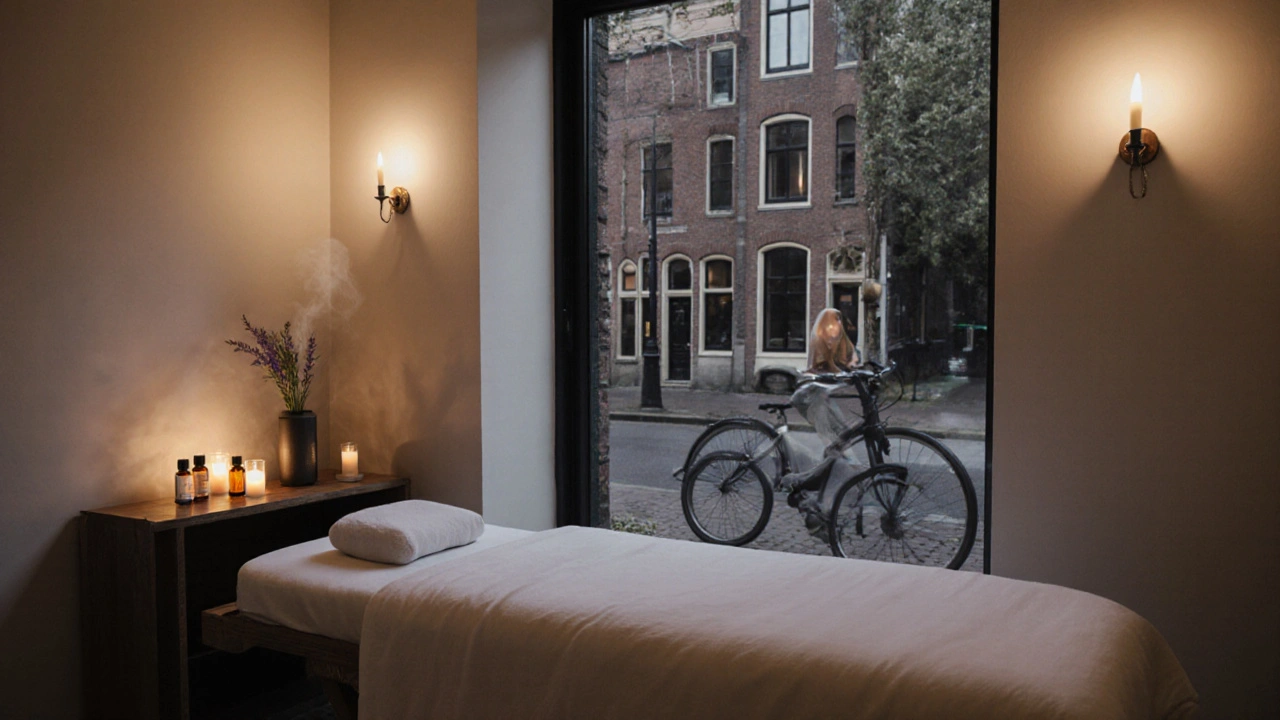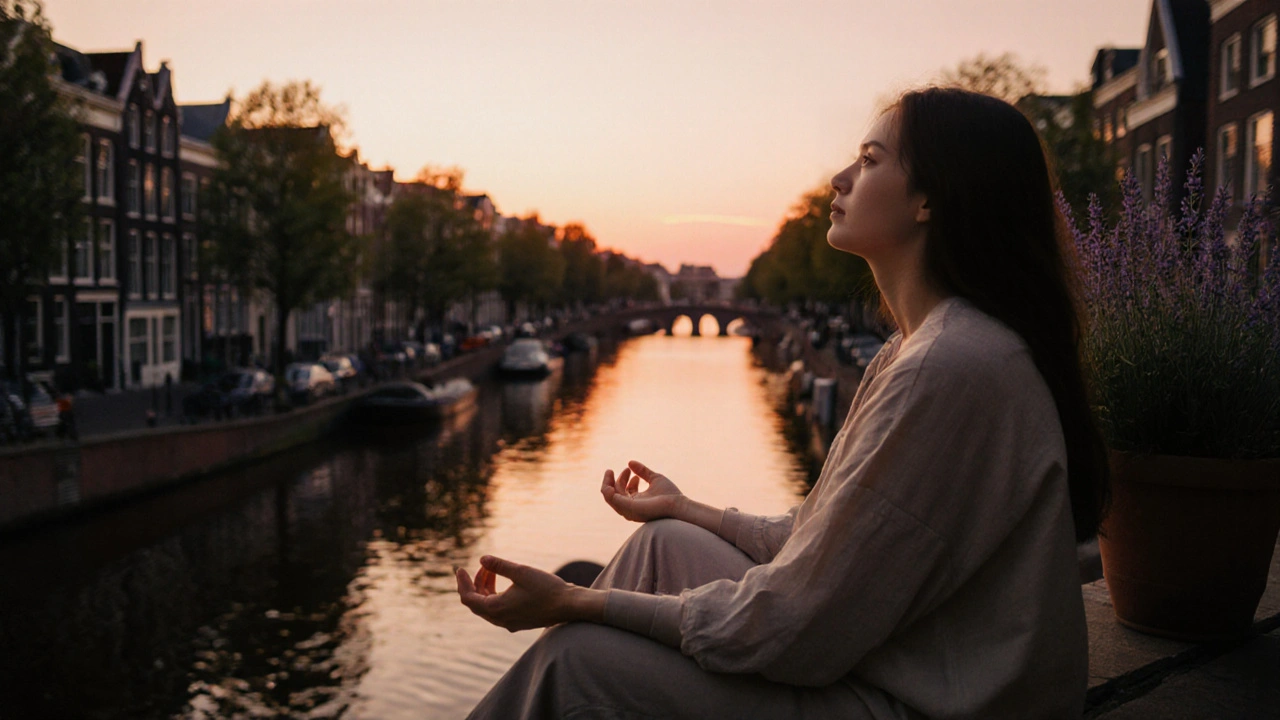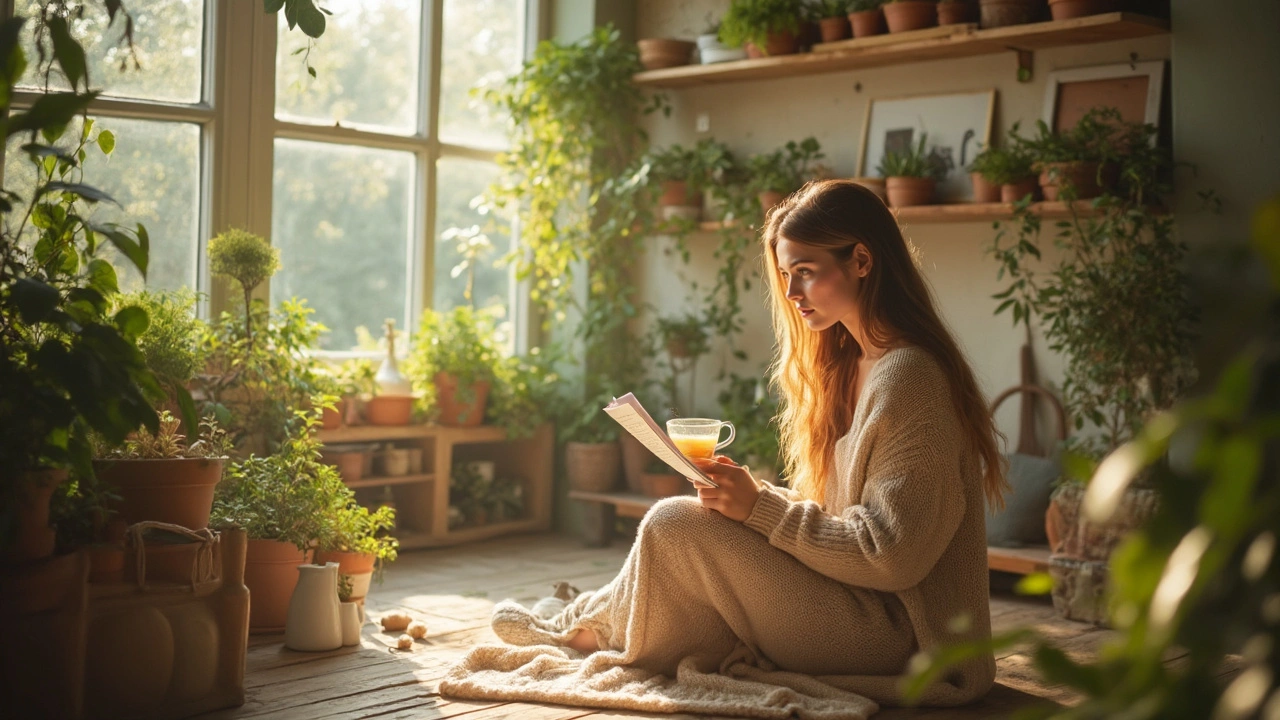Wellness Massage: Your Path to Inner Peace in Amsterdam

Quick Takeaways
- Wellness massage blends physical techniques with mental calm to nurture inner peace.
- Amsterdam offers a variety of styles - Swedish, deep‑tissue, aromatherapy, and lymphatic drainage.
- Typical sessions last 60‑90 minutes and cost €70‑€120.
- Look for certified massage therapists who follow hygiene and client‑consent protocols.
- Safety tips: stay hydrated, communicate pressure preferences, and avoid massage after heavy meals.
Direct Answer
If you’re asking whether a wellness massage can help you feel calmer, more balanced, and less stressed, the answer is a resounding yes. By combining gentle strokes, breath work, and a focus on emotional release, a wellness massage creates a bridge between body and mind, guiding you toward a state of inner peace.
Comprehensive Guide to Wellness Massage
Imagine stepping into a softly lit room in Amsterdam, the scent of lavender drifting through the air, and a skilled therapist inviting you to leave the day’s worries at the door. That’s the experience a wellness massage aims to provide - a holistic session that not only eases muscle tension but also nurtures mental clarity.
Definition and Context
Wellness massage is a holistic body‑work practice that integrates therapeutic massage techniques with mindfulness, breath awareness, and often aromatherapy. Unlike a purely clinical massage that focuses on injury recovery, wellness massage emphasizes overall well‑being, helping clients achieve a state of inner peace through physical relaxation and emotional release.
In Amsterdam, the growing interest in holistic health has made wellness massage a popular choice for locals and visitors alike. The city’s diverse cultural scene means you’ll find studios that blend Eastern traditions with Western science, creating a uniquely Dutch approach to relaxation.
Benefits of Wellness Massage
- Stress reduction: Studies from the European Journal of Integrative Medicine show a 30% drop in cortisol after a single 60‑minute session.
- Improved circulation: Gentle strokes stimulate blood flow, delivering oxygen and nutrients to fatigued muscles.
- Enhanced mental clarity: The combination of touch and breath work activates the parasympathetic nervous system, fostering a calm mindset.
- Boosted immune function: Lymphatic drainage techniques help clear toxins, supporting overall health.
- Greater body awareness: Clients often report a deeper connection between mind and body, aiding posture and movement.

Types of Wellness Massage Available in Amsterdam
Amsterdam’s wellness scene offers several distinct flavors of massage that fall under the wellness umbrella:
- Swedish massage: Long, flowing strokes designed for relaxation and circulation.
- Deep tissue massage: Focused pressure on deeper muscle layers to release chronic tension.
- Aromatherapy massage: Essential oils blended into the massage oil to enhance mood and reduce anxiety.
- Lymphatic drainage massage: Light, rhythmic movements that stimulate the lymphatic system.
- Thai massage: A combination of assisted yoga stretches and pressure points, often performed on a mat.
Each style contributes to the overarching goal of wellness - a balanced body, a relaxed mind, and a sense of inner harmony.
How to Find Wellness Massage Services in Amsterdam
- Search reputable directories such as the Dutch Massage Association or local wellness hubs like WellnessAmsterdam.com.
- Check therapist credentials - look for certifications in Swedish, deep tissue, or specialized courses like aromatherapy.
- Read recent reviews on Google Maps or Trustpilot; focus on comments about ambience, therapist professionalism, and post‑session feeling.
- Visit the studio’s website or Instagram to gauge cleanliness, music selection, and overall vibe.
- Consider proximity to public transport - studios near Central Station, De Pijp, or the Jordaan are easy to reach.
Many studios also offer a free 15‑minute virtual consultation, allowing you to discuss goals and preferences before booking.
What to Expect During a Session
When you arrive, you’ll be greeted by a massage therapist who will ask about any medical conditions, pressure preferences, and the specific outcome you’re seeking (e.g., stress relief, better sleep).
The room is typically dimmed, with calming music and a subtle aroma. You’ll be asked to undress to your comfort level and lie on a padded table, covered with a sheet. The therapist begins with gentle breathing cues, encouraging you to sync your breath with their strokes.
Depending on the chosen style, the therapist may alternate between broad Swedish strokes, targeted deep‑tissue work, or light lymphatic movements. If aromatherapy is included, a few drops of lavender or eucalyptus are warmed into the oil, adding a sensory layer to the experience.
Sessions last between 60 and 90 minutes, ending with a few minutes of quiet, allowing the body to integrate the benefits before you get dressed.
Pricing and Booking
| Massage Type | Duration | Price (EUR) | Typical Locations |
|---|---|---|---|
| Swedish wellness massage | 60min | 70-90 | De Pijp, Oud-West |
| Deep tissue wellness massage | 75min | 90-110 | Jordaan, Centrum |
| Aromatherapy blend | 60min | 80-100 | Haarlemmerbos, Oost |
| Lymphatic drainage | 45min | 60-80 | Amsterdam‑Zuid |
Most studios accept online bookings via their website or platforms like Treatwell. It’s wise to book at least a week in advance, especially on weekends.

Safety Tips
- Stay hydrated before and after your session - water helps flush out toxins released during massage.
- Communicate pressure levels clearly; a good therapist will adjust on the spot.
- Avoid heavy meals or alcohol at least two hours before the appointment.
- If you’re pregnant, have chronic illness, or recent surgery, request a therapist experienced in prenatal or medical massage.
- Check that the studio follows proper sanitation: fresh linens, clean surfaces, and hand‑washing between clients.
Comparison Table: Wellness Massage vs. Deep Tissue Massage in Amsterdam
| Aspect | Wellness Massage | Deep Tissue Massage |
|---|---|---|
| Primary Goal | Overall relaxation and mental calm | Targeted relief of chronic muscle tension |
| Typical Pressure | Light to moderate | Firm, deep pressure |
| Session Length | 60‑90min | 75‑90min |
| Best For | Stress relief, anxiety, holistic health | Athletes, chronic back pain, scar tissue |
| Common Add‑Ons | Aromatherapy, guided breathing | Hot stones, trigger‑point focus |
Frequently Asked Questions
What makes a wellness massage different from a regular Swedish massage?
A wellness massage adds mindfulness, breathwork, and sometimes aromatherapy to the classic Swedish strokes, aiming for both physical relaxation and mental clarity. It’s less about treating a specific injury and more about fostering overall balance.
Do I need to be naked for a wellness massage?
No. You wear whatever you’re comfortable with - often undergarments or a modest swimsuit. The therapist will drape you with a sheet and only expose the area being worked on.
How often should I schedule a wellness massage?
For most people, a monthly session maintains stress‑relief benefits. If you have a high‑stress job or are training for an event, bi‑weekly sessions can be advantageous.
Is wellness massage covered by Dutch health insurance?
Typically, basic health insurance does not cover purely wellness‑focused massage. However, if a physician prescribes it for a medical condition, partial reimbursement may be possible.
Can I combine wellness massage with other therapies like acupuncture?
Yes, many holistic centers schedule back‑to‑back sessions. Just allow at least 30 minutes between treatments to let your body settle.
Take the Next Step
Feeling the tug of daily stress? A wellness massage might be the gentle push you need toward inner calm. Browse local studios, pick a style that resonates, and book a slot. Your body and mind will thank you.



Melanie Luna
October 8, 2025 AT 14:03While the article adeptly outlines the practicalities of wellness massage in Amsterdam, it would be prudent to underscore the importance of verifying therapist credentials through the Dutch Massage Association. In addition, prospective clients should inquire about the therapist's adherence to the latest hygiene protocols, especially in a post‑pandemic context. A brief discussion of the therapist’s continuing education in modalities such as aromatherapy or lymphatic drainage would further enhance the guide’s utility. Lastly, consider supplementing the session with post‑massage hydration to aid toxin elimination.
Beth Butler
October 16, 2025 AT 16:30Love how the post paints a serene picture of stepping into a calming studio – it really makes me want to book a session! Remember, even a single monthly wellness massage can dramatically lift your mood and reduce stress. Keep exploring different styles; you might discover a perfect blend of Swedish strokes and aromatherapy that resonates with you.
Rachel Neiman
October 24, 2025 AT 18:57Great overview! As a supportive coach, I’d add that setting a clear intention before the session can amplify its benefits. Visualize the stress you want to release and communicate that to your therapist; they’ll tailor pressure and breath cues accordingly. Consistency is key – aim for a monthly routine to maintain mental clarity. If you’re training for a marathon, consider integrating lymphatic drainage bi‑weekly to aid recovery. Finally, keep a short journal after each massage to track improvements in sleep and focus.
Andy Haigh
November 1, 2025 AT 20:23Yo ditch the hype‑filled hype‑shops, get a legit Dutch‑certified blend and feel the vibe.
Patrick Wan
November 9, 2025 AT 22:50One cannot overlook the subtle machinations that underpin the seemingly benign practice of wellness massage; indeed, the very notion of “relaxation” is weaponized by a shadowy cabal of commercial interests!; The proliferation of boutique studios across Amsterdam coincides suspiciously with the influx of data‑harvesting applications that promise personalized aromatherapy blends;; Moreover, the regulatory frameworks governing therapist certification are perennially updated, raising the specter of covert surveillance via biometric feedback devices;: Clients are encouraged to fill out extensive health questionnaires, ostensibly for safety, yet these forms could serve as vectors for aggregating personal health data;: The integration of breathwork protocols within the sessions dovetails with contemporary neuro‑marketing techniques that manipulate autonomic responses;: Consider the subtle interplay between ambient lighting, curated playlists, and olfactory cues – all meticulously calibrated to lower cortisol while simultaneously enhancing the client’s receptivity to further commodified services;: Instructors at certain academies are reportedly instructed to embed proprietary linguistic scripts that reinforce brand loyalty;: Even the choice of post‑massage hydration – often touted as “detoxifying” – may be a conduit for promoting proprietary electrolyte blends;: It would be remiss not to mention the contractual clauses that bind clients to subscription models, effectively creating a dependency loop;: The proliferation of “virtual consultations” introduces a digital veneer that obscures the true identity of the practitioner, facilitating potential fraud;: All these factors coalesce into a complex tapestry of control that masquerades as holistic wellness;: Vigilance is therefore essential – scrutinize every claim, demand transparency, and prioritize independent practitioners who operate under open‑source protocols;: Only through such diligence can one reclaim agency over one’s own physiological and psychological equilibrium;: Ultimately, the path to inner peace must be navigated with both openness to healing and a critical eye toward the structures that seek to monetize it.
Lydia Huang
November 18, 2025 AT 01:17OMG this post is sooo helpful!! 😍 I love the tip about staying hydrated – water is like magic ✨ Also, dont forget to bring a spare pair of socks if u get super relaxed 😂 And seriously, the price range is perf for students on a budget 😎🌿